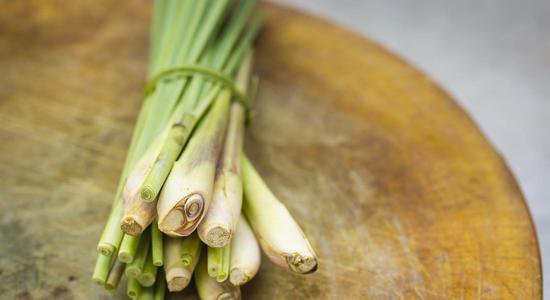See all "Essential Oil" Section Topics
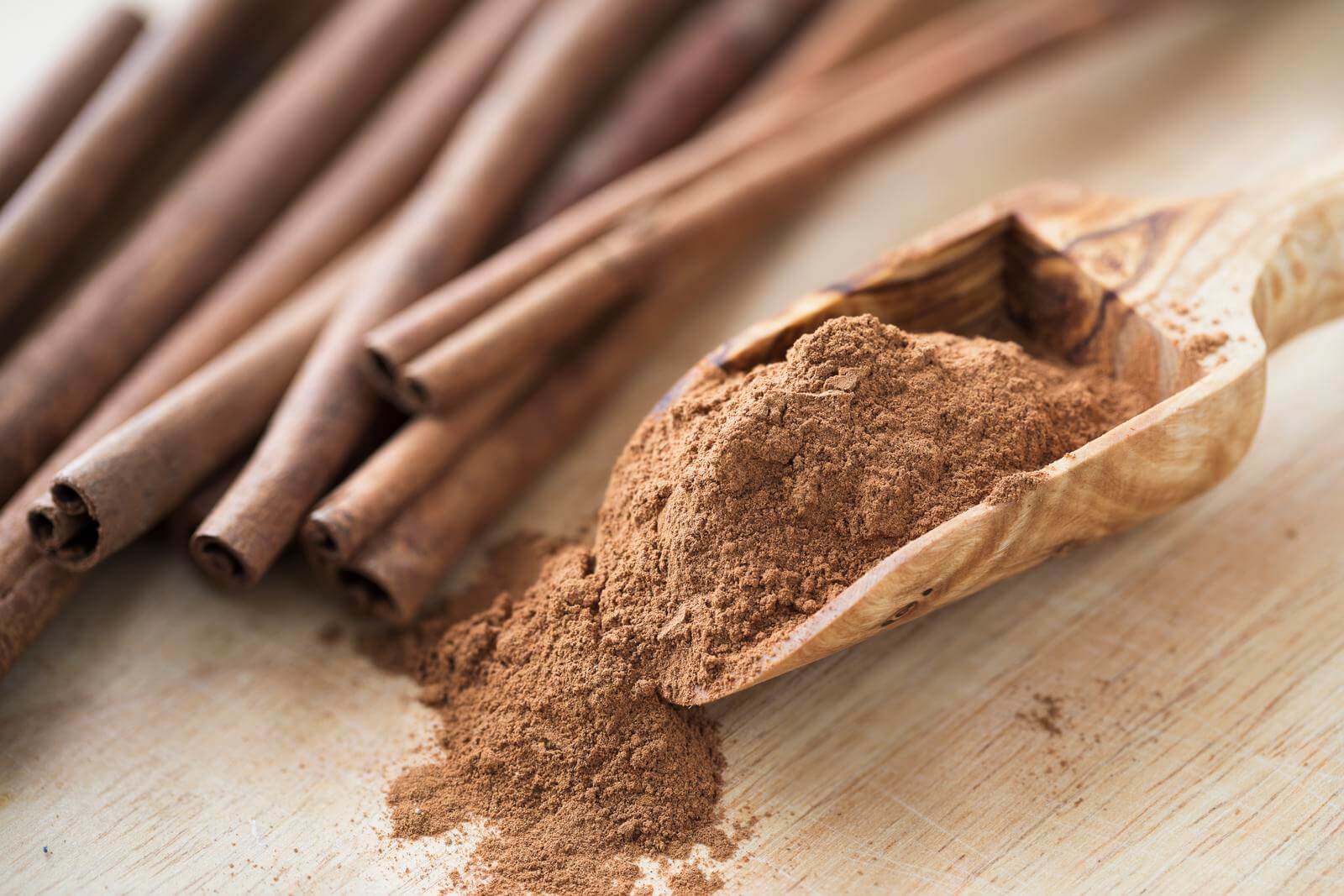
Cinnamon essential oil and cinnamon bark are both capable yeast infection treatments. The scientific name for the plant most cinnamon bark comes from is Cinnamomum zeylanicum. There is also, of course, Chinese cinnamon; which is made from the plant with the scientific name of Cinnamomum cassia. is As you will see to some degree in this article, there is a lot of research to support the fact that cinnamon can cure a yeast infection. Remember, some of the best ways to use essential oils is mixing several that are competent as a remedy for your ailment. This can possibly create a synergistic healing effect that can help you recover faster. For more oils that can cure a yeast infection check this page out: essential oils for yeast infection.
Research
There is a growing need for efficacious alternative yeast infection treatments due to the advent of synthetic drug resistant yeasts. Some types of Candida have become resistant to azole antifungal drugs (fluconazole, miconazole, itraconazole). This can be critical for an immunocompromised individual—such as a person who suffers from HIV.
Given this need, one study was conducted on fluconazole resistant strains of Candida. These strains were exposed to Aqueous extracts of powdered bark of Cinnamomum zeylanicum. The study was published in 1996 by the American Journal of Chinese Medicine [1996 Vol. 24 No. 2 pp. 103-109]. The study used 8 isolates of Candida from individuals who had HIV. The results of the study confirmed that cinnamon bark extracts generally inhibited Candida species. The chemicals trans-Cinnamaldehyde and O-methoxycinnamaldehyde (found in the cinnamon bark) also showed anti-Candida activity.
Another study, published in the Brazilian Archives of Biology and Technology [56(5), 749-755], did work directly with a essential cinnamon oil. The oil used was Cinnamomum zeylanicum blume essential oil (the leaf of the plant was used to make the oil). The primary chemical constituent of this oil was eugenol (comprising approximately 73% of the total liquid).
The researchers found that cinnamon oil did inhibit and kill all the strains of Candida (C. albicans, C. tropicalis, and C. krusei) used in the study. The study also relates the results of other studies of the reaction of Candida to cinnamon. The researchers related the following statement:
[The results of our study on cinnamon essential oil] were similar to those described by Klan et al. (2008). Through the test of diffusion in solid medium, they found halos of growth inhibition for the strains of C. albicans isolated from the clinical infections larger than 40 mm and MIC [minimum inhibitory concentration] of 780 µg/mL. Quale et al. (1996) evaluated the antifungal activity of essential oil of C. zeylanicum on Candida strains resistant to fluconazole. They found MIC values of C. zeylanicum ranging between 50 and 30,000 µg/mL. Hili et al. (1997) showed that 72.2% of the strains of C. albicans were sensitive to the essential oil of C. zeylanicum at 500 µg/mL. Pozzatti et al. (2008) evaluated the susceptibility to C. zeylanicum essential oil of 138 strains of Candida, including C. albicans, C. tropicalis and C. krusei, and MIC values ranged between 200 and 1600 µg / mL. However, most strains required 1600 µg/mL. For MFC [minimum fungicidal concentration], variations were observed between 800 and 1800 µg/mL.
http://ref.scielo.org/fyy2bw
Another study, published in Food and Chemical Toxicology [2007 Sep; 45(9):1650-61], determined the chemical components of cinnamon bark oil and cinnamon leaf oil. Leaf oil was comprised mainly of eugenol—the leaf oil was comprised of about 87% eugenol. Bark oil’s major component was cinnamaldehyde—the bark oil was comprised of about 50% cinnamaldehyde. Thus the two different plant parts produced drastically different chemical composition analysis results. It may be difficult to procure cinnamon leaf essential oil. Even though cinnamon leaf oil contains a good amount of eugenol, you won’t need to buy it for this. Clove essential oil has a very high concentration of eugenol. Research states that approximately 90% of clove essential oil is comprised of eugenol. So, it is clear, if you want something similar, if not better than cinnamon leaf oil, just look for the easy to find essential oil from cloves. And, using multiple types of oils can possibly have a synergistic effect. Using cinnamon bark oil with another essential oil or two is perhaps the best way to utilize the chemicals naturally produced by cinnamon!
Cinnamaldehyde and Yeast Infections
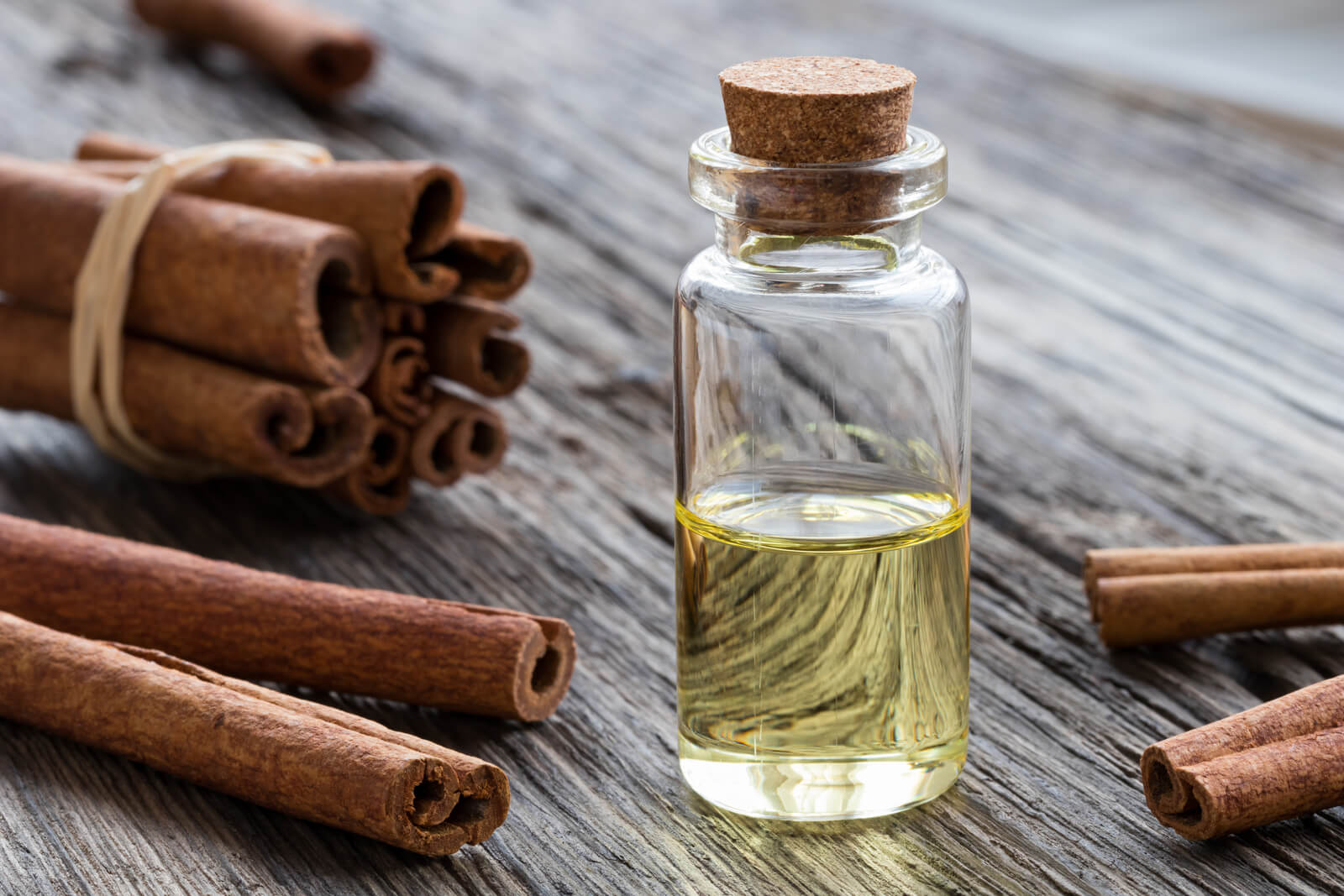
Cinnamaldehyde, the chemical cinnamon bark is rich in, is by itself a capable inhibitor of Candida. A study that demonstrated this was published in Journal of Essential Oil Research [11.1 (1999): 119-129]. The study tested concentrations of cinnamaldehyde between 1 mcg / mL and 1000 mcg / mL. The study found that 0.03 to 0.05 mg / mL would successfully inhibit Candida albicans. Greater concentrations of cinnamaldehyde also killed Candida albicans. So, if you use several drops of cinnamon bark essential oil, you should get more than enough of this chemical to put the brakes on a Candida problem.
A study, published in Frontiers in Microbiology [3 (2012)], found the antifungal drug amphotericin B was less capable of stopping a strain of Candida albicans than a combination of amphotericin B and cinnamaldehyde. This may be the rule, not the exception, of the effects of essential oils mixed with antifungal drugs. Therefore, even if you’re currently taking a prescription antifungal, it would be wise to add in an essential oil to enhance your therapies’ therapeutic power.
Eugenol in Cinnamon Leaf Oil
Eugenol has been shown to be a powerful inhibitor of Candida; even Candida that is protected behind a layer of slimy biofilm. Biofilm greatly increases Candida’s resistance to conventional antifungal drugs; however, essential oils have been able to break through the biofilm and kill yeast cells. A study that demonstrated this was published in Mycopathologia [163.3 (2007): 137-143]. The study found that 500 mg / L of eugenol was enough to kill entrenched Candida sessile cells (sessile cells are cells that are covered by biofilm). The researchers concluded that eugenol has strong activity against Candida with biofilm, and would make a safe treatment option.
A study was done on how eugenol would work as a treatment for vaginal yeast infections in female rats. The study was published in the Journal of Antimicrobial Chemotherapy [54.5 (2004): 909-914]. In the study, rat vaginas were inoculated with a strain of Candida albicans. Prophylactic (preventative) treatment and regular therapeutic treatment with eugenol were administered. The therapeutic treatment involved topically administering eugenol intravaginally twice a day for 7 consecutive days; starting 72 hours after inoculation. This continued until the 10th day. The prophylactic treatment involved topically administering eugenol twice a day for 5 consecutive days; starting 2 days before Candida was introduced and continuing for 3 days.
The study found that after 10 days, the prophylactic treatment had totally eliminated 2 of 9 rat vaginal yeast infections. The remaining 7 rats who still had Candida albicans present in their vaginas only had a small amount—the treatment resulted in reducing Candida by 98.89%. The therapeutic treatment also had similar results. Therapeutic treatment resulted in 2 of 9 rats being totally healed. The remaining 7 rats also had a reduction of Candida of 84.83%. The therapeutic results chart and the prophylactic results chart show the full findings of the study.
A 1/2 Day & Yeast is Gone!
Linda Allen suffered from yeast infections for years. Through researching natural medicine & Candida, she found an efficacious solution!
Linda is one expert you want on your side! Let her show you how to get rid of a superficial yeast infection in just 12 hours; AND, keep it gone!
A 60-day, 100% money back guarantee is provided.
Visit Official Site!You don’t Need Both Oil Types!
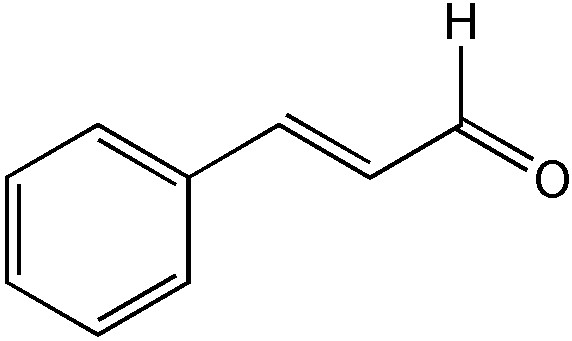
One way to get an effective amount of eugenol and cinnamaldehyde is to use both cinnamon bark oil and cinnamon leaf oil together. This may be difficult to do if you cannot find cinnamon oil made from the leaves of the plant and not the bark. As stated, clove oil contains more than enough eugenol and may be much easier to find. Again, mixing of antifungal essential oils will likely have a powerful synergistic healing effect. You can always use cinnamon bark powder if you don’t have any essential cinnamon oil on hand as well. Cinnamon bark has been shown to have a competent ability to inhibit Candida. As the research demonstrates, both types of cinnamon oil are capable treatments for yeast infections. But, it may really be unnecessary to try to acquire the plant’s leaf oil.
Eliminate Bacterial Vaginosis & Vaginal Odor
Jennifer O’Brien is one prominent expert on BV that knows how to get rid of vaginal odor. BV is a common infection that you don’t have to put up with.
Jennifer will show you how to naturally eliminate vaginal odor in just 3 days.
A 60-day, 100% money back guarantee is provided.
Visit Official Site!How to Take Cinnamon Bark Oil
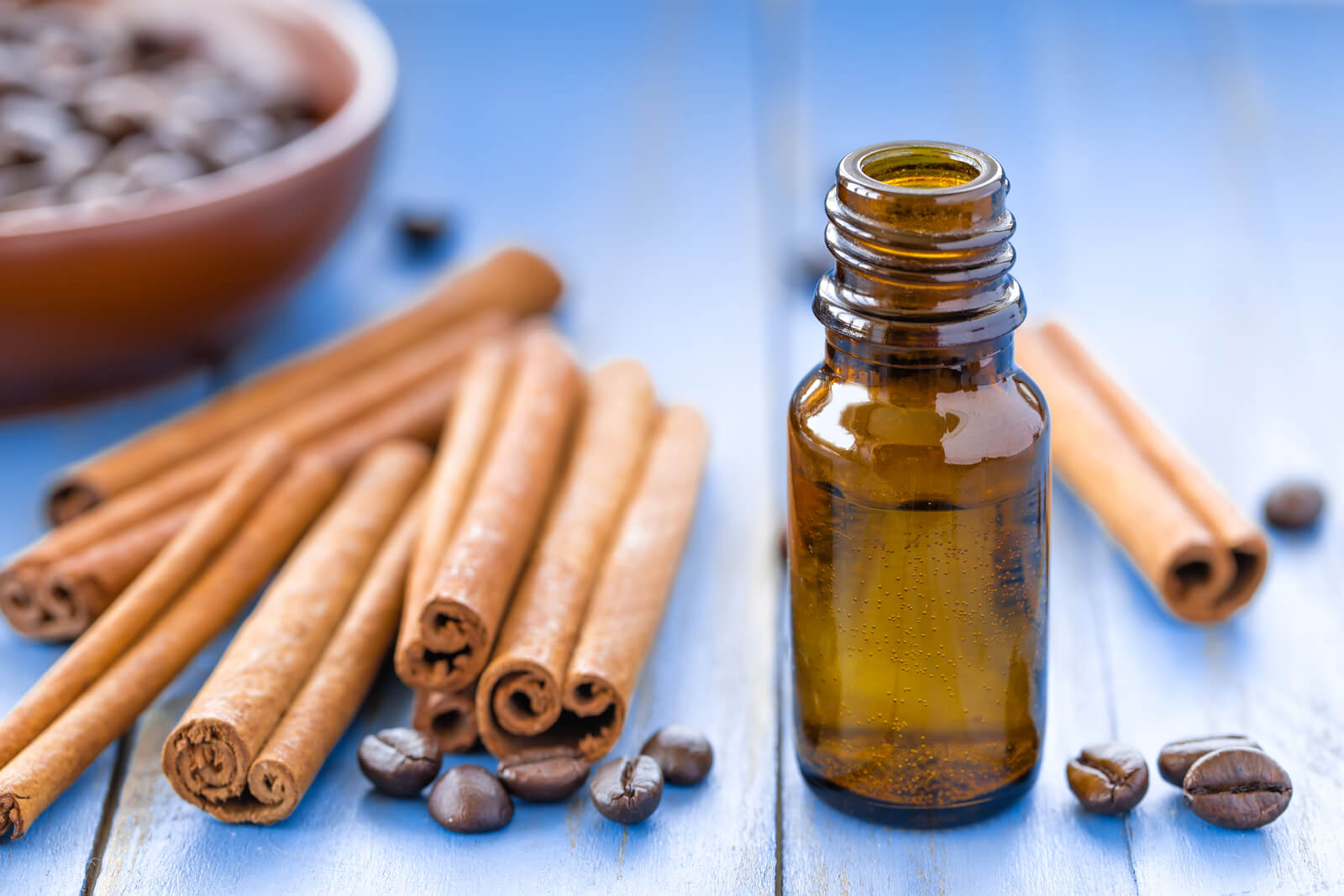
- Topical Use: You may apply cinnamon bark oil directly to the area of the body you need to. You may wish to use a carrier oil to dilute the cinnamon oil as the high phenol content can possibly irritate the skin.
- Oral Use: Cinnamon bark oil is generally regarded as safe for human consumption by the U.S. FDA. You can dilute 1 drop of oil in 2 teaspoons of honey or in 8 ounces of a liquid. You may need to further dilute the oil as it has a tendency to irritate mucous membranes. Do not use with children 6 years old and younger!
- Cautions: Use of this oil may cause skin irritation. The repetitious use of this essential oil can cause contact sensitization. Do not use this oil if you are pregnant. If you are using a diffuser with the oil, it may cause nasal irritation; it may burn if you directly inhale the pure vapor from the nebulizer of the diffuser.
Clair Goodall: Author & Nature Lover
Clair Goodall is a bee-obsessed natural medicine convert from Minnesota. She is one expert you might want to know more about!
Clair will help you protect you and your family from toxic products and chemicals and help you discover solutions from nature.
Also, Clair’s book is backed by a 60-day, 100% money back guarantee
Visit Official Site!Using Cinnamon Essential Oil
- Insect Repellant — Studies have shown that cinnamon oil may be even more effective at repelling mosquitoes than the synthetic chemical DEET. Cinnamon oil can even help stop common household pests such as flies, roaches, and black ants.
- Antifungal — Cinnamon oil can inhibit the growth of a variety of fungi. Since it smells wonderful, you can add some oil to your cleaning solutions to give your house a pleasant smell while stopping fungus. Also you can add this oil to water and soak your feet in it or apply it to your skin directly to combat fungal infections.
- Shampoo — Cinnamon oil will kill bacteria and keep head lice away. Its pleasant smell makes it a great addition to your shampoo. This can help keep kids lice free naturally.
A Natural, 12 Hour Yeast Infection Cure

According to a research paper published in Clinical Microbiology Reviews [12.1 (1999): 80-96], Candida species are quite ubiquitous organisms. Candida are most frequently present in the mouth; and, live in 31% to 55% of healthy people. The species that causes approximately 70% to 80% of all Candida infections is C. albicans.
The Chinese Journal of Obstetrics and Gynecology [2011 Jul;46(7):496] reports there appears to be a correlation between intestinal Candida infections and vaginal yeast infections. And, this provides a clue, as to why yeast infections in general, can reoccur.
This study states, in 148 cases of vaginal candida infections, 33.1% of the women were infected in both the intestines and vaginal area. The recurrence rate of yeast infections, in women with simultaneous intestinal infection, was significantly higher than for women who did not have an intestinal infection. This study concluded that vaginal yeast infections are highly associated with simultaneous intestinal Candida infection.
As research appears to indicate, systemic Candida infections can and do happen. A more systemic Candida infection may primarily get a foothold in the intestines; and cause a wide array of problems. If your yeast infections keep happening, a systemic Candida problem may be why.
One woman who suffered from a systemic Candida infection, for about 12 years, was Linda Allen. The systemic Candida infection that attacked Linda caused a wide range of health problems in addition to yeast infections. Some of these problems, Linda describes in her own words in the following quote:
To be honest, it was hard to pinpoint exactly what was wrong: I wasn’t really sick, but I wasn’t really well either. I had listlessness, fatigue, brain fog, stomach ailments, unexplained rashes, skin infections, and so on. It seemed like every day brought a new challenge.
My energy was sapped and I felt exhausted, which affected my grades and put a big dent in my social life.
Linda Allen’s symptoms included an embarrassing vaginal discharge, severe itching, and burning sensations. Her infections were difficult to deal with, and Linda’s health problems cost her financially as well. Linda states these infections of Candida can become excruciating when they happen as frequently as a menstrual period.
Yet, Linda spent a great deal of time in research; and even questioned health professionals who were kind enough to share some time with her. Linda even tried an array of purported "cures." Although it took a while, eventually, Linda put together a natural treatment plan she hoped would solve her Candida situation.
After spending about a year refining her new approach, Linda tried her system on herself. It worked amazingly well. Linda even returned to a few medical doctors to get tested for the presence of infections. These tests revealed all indicators of infection had vanished! Linda was indeed well again, after such a long, difficult journey.
Linda has since published a book detailing how to copy her success. She also includes a 12 hour yeast infection cure that can get rid of a superficial (such as a genital yeast infection or oral thrush) yeast infection in about 12 hours.
Linda’s publisher protects those who get her book with a 60 day, 100% money back guarantee. Linda’s publisher, a subsidiary of the United States based firm Keynetics Incorporated, is a reputable digital retailer that has been around for a long time. They have great customer service, and make getting a full refund on Linda’s book quick and easy. If you’re not satisfied, you can quickly get all your money back.
If you would like to learn more about Linda’s journey to freedom from Candida, see reviews of others who tried her natural system, or find out more about her efficacious book; you can find more information at Linda Allen’s website.
Author: Mr. Nicholas Gross

Nick Gross is a natural medicine enthusiast who has been researching and writing about natural medicine since 2008. Nick is primarily a web developer but also researches and authors written and video content about natural health. Nick has a bachelor’s degree in Management Information Systems from the University of Northern Iowa.
Disclaimer
The information on this website is not a prescription for anyone. This information is for informational or educational purposes only, and is not a substitute for professional medical advice or consultations with healthcare professionals.
Affiliate Disclosure
Some of the links provided on this website are affiliate links. When a purchase is made through these links, Candida Hub earns money from commission. This helps to keep the website up and helpful to people for free. Thank you for any support!
Stay Up to Date
If you enjoyed this article, consider following / liking our Facebook page. This page is primarily utilized to alert followers of new articles that are put on Candida Hub. Candida related news is also discussed. While you are there, you can see what has been more recently added to Candida Hub.
SOURCES:
- http://www.ncbi.nlm.nih.gov/pubmed/8874667 — In vitro activity of Cinnamomum zeylanicum against azole resistant and sensitive Candida species and a pilot study of cinnamon for oral candidiasis. American Journal of Chinese Medicine (1996 Vol. 24 No. 2 pp. 103-109)
- http://ref.scielo.org/fyy2bw — Castro, Ricardo Dias de, & Lima, Edeltrudes Oliveira. (2013). Anti-Candida activity and chemical composition of Cinnamomum zeylanicum blume essential oil. Brazilian Archives of Biology and Technology, 56(5), 749-755.
- http://www.ncbi.nlm.nih.gov/pubmed/17408833 — Singh G1, Maurya S, DeLampasona MP, Catalan CA. A comparison of chemical, antioxidant and antimicrobial studies of cinnamon leaf and bark volatile oils, oleoresins and their constituents. Food and chemical toxicology 2007 Sep;45(9):1650-61
- http://dx.doi.org/10.1080/10412905.1999.9701086 — Ferhout, Hicham, et al. "Antifungal activity of selected essential oils, cinnamaldehyde and carvacrol against Malassezia furfur and Candida albicans." Journal of Essential Oil Research 11.1 (1999): 119-129.
- Parthasarathy, Villupanoor A., Bhageerathy Chempakam, and T. John Zachariah, eds. Chemistry of spices. CABI, 2008.
- http://dx.doi.org/10.3389%2Ffmicb.2012.00261 — Kim, Jong H., et al. "Enhancement of antimycotic activity of amphotericin B by targeting the oxidative stress response of Candida and Cryptococcus with natural dihydroxybenzaldehydes." Frontiers in microbiology 3 (2012). Full Text Available Here
- http://www.ncbi.nlm.nih.gov/pubmed/17356790 — He, Miao, et al. "In vitro activity of eugenol against Candida albicans biofilms." Mycopathologia 163.3 (2007): 137-143.
- http://dx.doi.org/10.1093/jac/dkh436 — Chami, F., et al. "Evaluation of carvacrol and eugenol as prophylaxis and treatment of vaginal candidiasis in an immunosuppressed rat model." Journal of Antimicrobial Chemotherapy 54.5 (2004): 909-914. Full Text Available Here
- Google Books — Higley, Connie, and Alan Higley. Reference guide for essential oils. Abundant Health, 1998.
- https://doi.org/10.1128/CMR.12.1.80 -- Fidel, Paul L., Jose A. Vazquez, and Jack D. Sobel. "Candida glabrata: review of epidemiology, pathogenesis, and clinical disease with comparison to C. albicans." Clinical Microbiology Reviews [12.1 (1999): 80-96].
- https://pubmed.ncbi.nlm.nih.gov/22041440/ -- Lin XL, Li Z, Zuo XL. "Study on the relationship between vaginal and intestinal candida in patients with vulvovaginal candidiasis." Chinese Journal of Obstetrics and Gynecology (Zhonghua fu chan ke za zhi). [2011 Jul;46(7):496].





